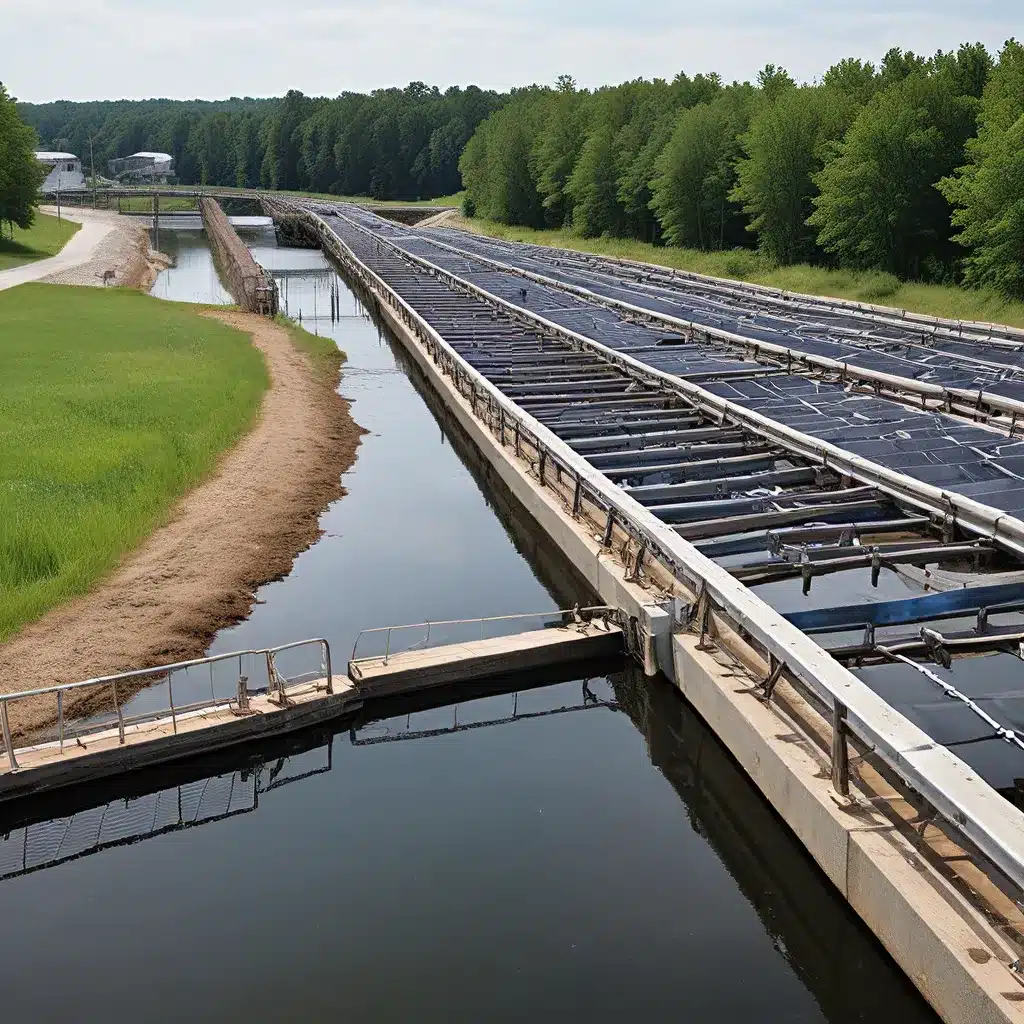
The Renewable Energy Conundrum
Ah, the age-old question that’s been plaguing the water treatment industry for years – how do we harness the power of renewable energy to power our wastewater facilities? It’s a challenge that’s got environmental experts and engineers scratching their heads, but trust me, we’re making progress.
Let’s rewind a bit. Wastewater treatment plants are notoriously energy-intensive. Think about all the pumps, aerators, and other equipment running 24/7 to keep our water clean and safe. And traditionally, most of that energy has come from good ol’ fossil fuels – not exactly the greenest solution, am I right?
But now, the tides are turning. Renewable energy sources like solar, wind, and even hydropower are proving to be viable options for powering these essential facilities. Mario Garcia-Sanz, a professor of electrical engineering at Case Western Reserve University, has been at the forefront of this movement, exploring ways to “bridge the gap” between renewable energy and wastewater treatment.
Harnessing the Sun’s Power
One of the most promising renewable energy solutions for wastewater plants? Solar power. Think about it – these facilities are often located in open, sunny areas, making them prime real estate for solar panel installations. And the best part? The energy generated can be used to power all those energy-guzzling pumps and aerators.
“But wait,” you might be thinking, “what about cloudy days or nighttime?” Ah, yes, the age-old solar power conundrum. Well, my friends, that’s where energy storage solutions come into play. Batteries and other storage systems can capture the sun’s energy during the day and release it when the plant needs it most.
According to the International Renewable Energy Agency (IRENA), integrating solar power with energy storage can help wastewater facilities become more self-sufficient and sustainable. And let’s not forget the added bonus of reducing those pesky energy bills – a win-win for both the environment and the bottom line.
Harnessing the Wind’s Power
But solar power isn’t the only renewable energy source making waves in the wastewater treatment world. Wind power is also proving to be a game-changer.
Just imagine it – towering wind turbines dotting the landscape, their blades spinning to generate clean, renewable electricity for the nearby wastewater plant. It’s a sight that’s becoming more and more common as water treatment facilities look to diversify their energy sources.
And the beauty of wind power is that it’s often more consistent than solar, providing a steadier stream of energy throughout the day (and night). Plus, with advancements in turbine technology, wind power is becoming more efficient and cost-effective than ever before.
Harnessing the Water’s Power
But wait, there’s more! Wastewater treatment plants are often located near rivers, lakes, or even the ocean – prime real estate for harnessing the power of hydropower.
Now, I know what you’re thinking – “Hydropower? Isn’t that just for big dams and massive power plants?” Well, yes and no. Smaller-scale hydropower systems, like those used in wastewater treatment, are becoming increasingly popular.
According to the International Energy Agency (IEA), these micro-hydropower systems can be integrated into existing water infrastructure, using the natural flow of water to generate electricity. And the best part? They’re often more reliable than solar or wind, providing a consistent source of renewable energy for the plant.
The Renewable Energy Trifecta
Okay, so we’ve covered solar, wind, and hydropower – but what if we could combine all three?
That’s where the concept of a renewable energy trifecta comes into play. By integrating multiple renewable sources, wastewater treatment plants can create a diversified, resilient energy system that’s not reliant on any single source.
Imagine it – solar panels lining the rooftops, wind turbines dotting the landscape, and a micro-hydropower system harnessing the flow of the nearby river. Together, these renewable energy sources can work in harmony to power the plant, reducing its carbon footprint and cutting energy costs in the process.
Inland Waters Inc., a leading provider of water treatment and environmental services, is already leading the charge when it comes to this renewable energy trifecta. They’ve been working closely with experts like Mario Garcia-Sanz to develop innovative solutions that seamlessly integrate solar, wind, and hydropower into their wastewater treatment facilities.
Challenges and Opportunities
Of course, integrating renewable energy into wastewater treatment systems isn’t without its challenges. Intermittency, grid integration, and the upfront costs of these technologies can all be roadblocks to widespread adoption.
But as the technology continues to evolve and the cost of renewable energy decreases, the opportunities are becoming more and more compelling. And let’s not forget the immense environmental and financial benefits – reduced carbon emissions, lower energy bills, and the potential to even generate revenue by selling excess energy back to the grid.
The Future of Wastewater Treatment
So, what does the future of wastewater treatment look like? If the experts have their way, it’ll be a future powered by a diverse array of renewable energy sources, working in harmony to keep our water clean and our planet healthy.
It’s an exciting time, my friends. As we continue to bridge the gap between renewable energy and wastewater treatment, the possibilities are endless. Who knows – maybe one day, these facilities will be net-zero energy producers, generating more clean power than they need and sending the surplus out to the grid.
One thing’s for sure: the water treatment industry is in for a renewable energy revolution. And with innovative thinkers like Mario Garcia-Sanz leading the charge, I can’t wait to see what the future holds.


